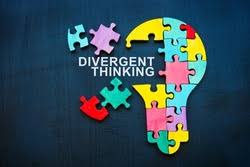Exploring the Intersectionality of Linguistics, Media Representation, and Race in Student Identity
In education and media, we often focus on isolated themes like curriculum design, representation, and social equity. However, a holistic approach to student identity demands that we explore these elements in combination. The Venn diagram in this post visually represents the interconnectedness of three key factors: Linguistics (Structured Literacy), Media Representation, and Race. At their intersection lies the core of student identity—a sense of belonging that is fundamental for academic success and personal development.
The Power of Linguistics: Structured Literacy
Linguistics (Structured Literacy) forms the bedrock of how students access, understand, and utilize language in education. This includes not only grammar and pronunciation but also vocabulary choices, sentence structure, and the organization of ideas. For students, especially those with specific learning disabilities such as dyslexia, a strong linguistic foundation is crucial for building confidence and competence in the classroom. Literacy isn’t just a functional skill; it’s a gateway to self-expression, critical thinking, and identity formation. When we examine linguistic practices, particularly in literacy curriculums, it’s essential to consider how these practices align with the diverse linguistic needs of students from different backgrounds. Language is not neutral—it carries historical, cultural, and racial implications. Thus, linguistic structures should not only cater to academic standards but should also validate and empower diverse linguistic experiences.
Media Representation: Reflecting and Reshaping Identities
Media Representation plays a significant role in shaping how students perceive themselves and others. When students see their identities reflected positively in media—whether in textbooks, online content, or storytelling—it enhances their self-worth and sense of belonging. However, media that omits or misrepresents certain groups can perpetuate negative stereotypes and exacerbate feelings of alienation. For students from marginalized racial and linguistic backgrounds, positive media representation can serve as a mirror, allowing them to see their stories, values, and experiences reflected in what they consume. It’s about more than just visibility; it’s about the authenticity of the stories being told and the agency given to those narratives.
Race: A Fundamental Factor in Identity Formation
Race is a central element in the construction of student identity. While often perceived as a sensitive topic, race profoundly impacts how students experience and navigate the education system. Issues of racial inequality, systemic bias, and cultural misunderstandings often manifest in educational settings, affecting how students perceive themselves and their capabilities. Addressing race in education is not just about diversity initiatives; it’s about creating environments where all students feel that their identity is acknowledged, respected, and valued. Race intersects with both linguistic practices and media representation, influencing how students relate to the curriculum and media content they encounter.
The Intersection: Student Identity and Sense of Belonging
At the intersection of Linguistics (Structured Literacy), Media Representation, and Race, lies the heart of Student Identity/Sense of Belonging. It’s where all three elements converge to impact how students perceive their place in the world. This convergence is crucial because a strong sense of belonging is directly tied to academic success, social-emotional well-being, and personal growth. When students feel that their linguistic backgrounds are understood, their racial identities are respected, and their stories are authentically represented in media, they are more likely to develop a positive sense of self. This sense of belonging is not merely an outcome; it is a necessary foundation for students to thrive academically and personally.
Moving Forward: Implications for Educators and Content Creators
The implications of this intersection are clear for both educators and content creators. For educators, it means designing literacy curriculums that are inclusive of diverse linguistic structures and reflective of the racial and cultural backgrounds of all students. It requires moving beyond traditional models of education and considering the whole student. For content creators in the media, this intersection emphasizes the responsibility to craft narratives and visuals that accurately and positively represent diverse racial and linguistic identities. This approach must go beyond tokenism, ensuring that representation is meaningful and empowering.
The diagram visually captures the complex interplay between Linguistics (Structured Literacy), Media Representation, and Race in shaping student identity. The focus on the intersectionality of these elements reveals that a true sense of belonging is multi-faceted, requiring attention to each domain in harmony. To create an educational landscape where all students can thrive, we must be intentional about addressing these intersections. By doing so, we foster an environment where every student’s identity is validated, and their sense of belonging is nurtured.
Shawn Anthony Robinson PhD




Comments
Post a Comment